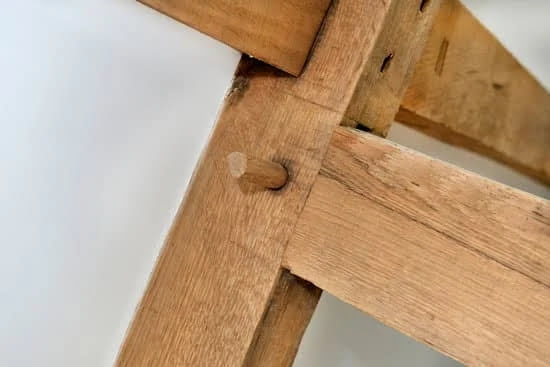Woodworking clamps are essential tools for any woodworker, helping to hold pieces of wood together securely during the building or repairing process. However, proper storage for woodworking clamps is often overlooked despite its crucial role in maintaining the clamps’ functionality and longevity. Without adequate storage, woodworking clamps can become damaged or misplaced, leading to frustration and inefficiency in the workshop.
Woodworking clamps come in various types and sizes, each serving a specific purpose in holding wood pieces together. From bar clamps to hand screw clamps, having a diverse collection means needing efficient storage solutions to keep them organized and easily accessible when needed. Whether you have a small garage workshop or a spacious woodworking studio, finding the right storage system for your clamps is key to maximizing their usefulness and lifespan.
In this article, we will explore the importance of proper storage for woodworking clamps, discuss different types of woodworking clams and their sizes, provide DIY storage solutions for small woodworking clamps, guide you through purchased storage options for large woodworking clamps, and offer tips for organizing and maintaining your woodworking clamp collection. By learning how to store your woodworking clamps efficiently, you can enhance your woodworking experience and ensure that your tools are always ready for use.
Importance of Proper Storage for Woodworking Clamps
Woodworking clamps are essential tools for any woodworking enthusiast, as they help hold pieces of wood together securely during gluing, drilling, or other woodworking processes. However, many woodworkers overlook the importance of proper storage for these clamps.
Proper storage not only helps in prolonging the lifespan of the clamps but also makes them easily accessible whenever needed. In this section, we will delve into why proper storage for woodworking clamps is crucial and how it can benefit woodworkers in their projects.
Preventing Damage and Wear
One of the main reasons why proper storage is essential for woodworking clamps is to prevent damage and wear. Storing clamps haphazardly can lead to them getting tangled up with each other, causing scratches, dents, or other forms of damage.
Additionally, if clamps are stored in an environment where they are exposed to moisture or extreme temperatures, it can lead to rusting or corrosion. By providing a designated storage space for woodworking clamps, woodworkers can protect their investment and ensure that their clamps remain in top condition for years to come.
Efficiency and Organization
Proper storage for woodworking clamps also plays a vital role in enhancing efficiency and organization in the workshop. When clamps are stored in an organized manner, woodworkers can easily locate the specific clamp they need without having to rummage through a pile of tools. This saves time and minimizes frustration during woodworking projects. Additionally, having a designated storage solution for clamps prevents them from cluttering up work surfaces or getting misplaced, thereby creating a more streamlined and productive workspace.
Types of Woodworking Clamps and Their Sizes
Woodworking clamps are essential tools for any woodworker, as they help hold pieces of wood securely in place during various projects. There are several types of woodworking clamps available, each serving a specific purpose depending on the project at hand. Some common types include bar clamps, pipe clamps, spring clamps, and C-clamps, among others. It’s important to understand the differences between these types to choose the right one for your project.
Bar Clamps
Bar clamps are versatile and come in various sizes ranging from small to large. They feature a sliding bar mechanism that allows for easy adjustment to fit different workpieces. The larger sizes are ideal for heavy-duty tasks that require extra strength and pressure, while the smaller sizes are perfect for more delicate projects.
Pipe Clamps
Pipe clamps are another common type of woodworking clamp that is often used for large-scale projects. They consist of two long pipes connected by a series of clamp heads that can be adjusted along the length of the pipes. Pipe clamps are great for providing even pressure across long spans of material and can accommodate different sizes by simply using longer or shorter pipes.
Spring Clamps
Spring clamps are small, lightweight clamps that are perfect for holding down small pieces or securing glued joints while they dry. These clamps have a simple design with two arms connected by a spring mechanism that provides consistent pressure without much effort. They come in various sizes and can be easily stored in a toolbox or on a pegboard.
Understanding the different types of woodworking clamps and their sizes is crucial when it comes to selecting the right tools for your projects. By having a variety of clamp options in your workshop, you will be well-equipped to tackle any woodworking task effectively and efficiently. Consider investing in a combination of bar clamps, pipe clamps, spring clamps, and other types to cover all your bases and ensure you have the right tool for every job.
DIY Storage Solutions for Small Woodworking Clamps
Woodworking clamps are essential tools for any woodworker, allowing them to secure workpieces in place during various woodworking projects. However, with different types and sizes of clamps being used, it can be a challenge to keep them organized and easily accessible in the workshop. This is where proper storage solutions come into play, especially for small woodworking clamps.
When it comes to storing small woodworking clamps, DIY solutions can be cost-effective and tailored to fit your specific needs. Here are some practical and creative ideas for storing small woodworking clamps:
- Use a pegboard: Install a pegboard on the wall of your workshop and hang your clamps using hooks or specially designed clamp holders. This allows you to easily see and access each clamp without taking up valuable floor or shelf space.
- Build a clamp rack: Construct a simple rack using scrap wood or PVC pipes to create slots for each clamp. You can customize the size of the slots based on the dimensions of your clamps, ensuring a snug fit for each one.
- Repurpose old drawers: If you have spare drawers lying around, repurpose them into a storage unit for your small woodworking clamps. Add dividers or compartments within the drawer to keep each clamp organized and prevent them from getting tangled.
By implementing these DIY storage solutions for small woodworking clamps, you can maximize space in your workshop while keeping your clamps easily accessible and well-organized. Whether you choose to use a pegboard, build a clamp rack, or repurpose old drawers, having a dedicated storage system will help streamline your woodworking projects and enhance overall efficiency.
Purchased Storage Options for Large Woodworking Clamps
When it comes to large woodworking clamps, having a proper storage solution becomes crucial to ensure they are kept organized, easily accessible, and well-maintained. There are various purchased storage options available that cater specifically to the needs of larger clamps. One popular choice among woodworkers is a clamp rack or wall-mounted clamp organizer. These racks come in different sizes and designs, allowing users to store their large clamps securely while saving space in their workshop.
Another common purchased storage option for large woodworking clamps is a mobile clamp cart or stand. These carts often have wheels for easy maneuverability, making it convenient to transport the clamps around your workspace as needed. Additionally, some clamp carts come with built-in holders and compartments specifically designed to accommodate larger clamps, keeping them neatly arranged and protected from damage.
For woodworkers who prefer a more versatile storage solution for their large woodworking clamps, there are clamp storage cabinets available in the market. These cabinets typically feature adjustable shelves or drawers where users can customize the layout to fit their collection of clamps. With the ability to store various sizes of clamps in one centralized location, a clamp storage cabinet is an ideal option for those who value both organization and accessibility in their workshops.
| Storage Option | Features |
|---|---|
| Clamp Rack/Wall-Mounted Organizer | Space-saving design; secure storage |
| Mobile Clamp Cart/Stand | Portability; built-in holders for large clamps |
| Clamp Storage Cabinet | Adjustable shelves/drawers; centralized organization |
Tips for Organizing and Maintaining Woodworking Clamps
Woodworking clamps are essential tools for any woodworking project, as they help hold pieces of wood securely while glue dries or when making cuts. To ensure these clamps last a long time and remain in good working condition, it is crucial to organize and maintain them properly. One key aspect of this is having efficient storage for woodworking clamps. Proper storage not only keeps your clamps organized but also protects them from damage, such as rust or bending.
There are several DIY storage solutions that you can use for small woodworking clamps. One popular option is to create a clamp rack using scrap pieces of wood. By mounting wooden strips horizontally on a wall or the side of a workbench, you can easily hang your clamps in an organized manner. Another idea is to repurpose PVC pipes by cutting them into short sections and attaching them vertically to a board for storing smaller clamps.
For larger woodworking clamps, purchased storage options are available that offer convenience and efficiency. Clamp racks with adjustable slots can accommodate various sizes of clamps and keep them neatly arranged. Some clamp storage systems even have wheels, allowing you to move the entire collection around your workshop with ease. Investing in quality storage solutions specifically designed for woodworking clamps can save you time and frustration when working on projects.
| DIY Storage Solutions for Small Clamps | Purchased Storage Options for Large Clamps |
|---|---|
| Creating a clamp rack using scrap wood | Clamp racks with adjustable slots |
| Repurposing PVC pipes for storing smaller clamps | Storage systems with wheels for easy mobility |
Common Mistakes to Avoid When Storing Woodworking Clamps
When it comes to storing woodworking clamps, there are several common mistakes that many enthusiasts make. Avoiding these mistakes can help prolong the lifespan of your clamps and keep your workspace organized. Here are some key errors to steer clear of when storing woodworking clamps:
- Neglecting proper cleaning: One of the most common mistakes is failing to clean the clamps before storage. Sawdust, dirt, and debris can accumulate on the clamps during use, leading to corrosion and damage over time. It is essential to wipe down the clamps with a clean cloth after each use and periodically clean them with a mild detergent to remove stubborn grime.
- Storing wet or damp clamps: Another mistake to avoid is storing clamps that are wet or damp. Moisture can cause rust to develop on metal parts, compromising their functionality. Before putting away your clamps, make sure they are thoroughly dry. You can use a towel or air compressor to remove any moisture before storage.
- Overloading storage racks: Many woodworkers make the mistake of overloading their storage racks with too many clamps. This can lead to instability, making it easier for the clamps to fall and potentially get damaged. It is important to distribute the weight evenly on the rack and not exceed its weight capacity.
By being mindful of these common mistakes, you can ensure that your woodworking clamps stay in excellent condition and are readily accessible when needed for your next project. Proper maintenance and storage practices will not only extend the life of your clamps but also contribute to a more efficient and organized workshop environment. Remember, taking care of your tools now will pay off in the long run.
Conclusion
In conclusion, proper storage for woodworking clamps is essential for any woodworking enthusiast looking to keep their workspace organized and efficient. Woodworking clamps are valuable tools that come in various types and sizes, and taking care of them by storing them correctly can prolong their lifespan and ensure they remain in good working condition.
Whether you opt for DIY storage solutions for small woodworking clamps or invest in purchased storage options for larger clamps, the key is to prioritize organization and accessibility. By having a designated space for your clamps, you not only protect them from damage but also make it easier to find the right clamp when needed during a project.
Additionally, implementing tips for organizing and maintaining woodworking clamps, such as keeping them clean and dry, checking for any signs of wear regularly, and avoiding common mistakes like overcrowding storage spaces or using improper methods of hanging or stacking clamps, will go a long way in ensuring your woodworking clamp collection remains functional for years to come.
Remember, a well-organized workshop is a productive workshop – so take the time to create a storage system that works best for you and enjoy the benefits of a clutter-free environment for all your woodworking projects.
Frequently Asked Questions
What Is the Best Way to Store Woodworking Clamps?
The best way to store woodworking clamps is by utilizing a clamp rack or wall-mounted storage system. This allows for easy accessibility and keeps the clamps organized and off the floor, maximizing workspace efficiency.
How Do You Organize Shop Clamps?
When organizing shop clamps, it is helpful to group them based on size or type. This can be done by using designated containers, shelves, or pegboards to ensure each clamp has its place. Keeping them neatly stored not only saves time but also prevents damage.
How Do You Store F Clamps?
Storing F clamps can be effectively done by hanging them on a pegboard or installing a rack specifically designed for this type of clamp. This method helps keep F clamps organized and easily accessible when needed, reducing clutter in the workspace.

Hi everyone! I’m a woodworker and blogger, and this is my woodworking blog. In my blog, I share tips and tricks for woodworkers of all skill levels, as well as project ideas that you can try yourself.





